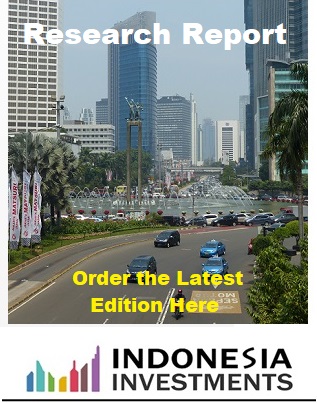Indonesia's Energy Subsidy Spending Far Above Target in 2018
Ahead of the legislative and presidential elections (scheduled for April 2019) the Indonesian government is unwilling to impose impopular measures. One of the side-effects is that subsidy spending has gone beyond the target that was set in the 2018 State Budget. Lets take a closer look at spending on energy subsidies in Indonesia so far this year.
Up to 31 October 2018, the Indonesian government spent IDR 117.4 trillion (approx. USD $8.0 billion) on energy subsidies. Considering the government targeted energy subsidy spending at IDR 94.4 trillion (approx. USD $6.5 billion) in the 2018 State Budget, energy subsidy spending realization has already reached 124.2 percent of the budget.
There are three factors behind this generous energy subsidy spending so far in 2018:
(1) global crude oil prices had been strengthening significantly up to October 2018;
(2) the rupiah has been weakening against the US dollar for most of the year;
(3) the government is reluctant to raise prices of subsidized fuels and electricity in order to avoid losing votes for next year's elections.
Particularly higher prices of subsidized fuels tend to meet fierce resistance in Southeast Asia's largest economy where many millions of people live in poverty or just above the poverty line. A price hike would push inflation higher, hence making life more costly.
Subsidy spending on subsidized fuels and subsidized 3-kilogram liquefied petroleum gas (LPG) canisters reached IDR 75.3 trillion (approx. USD $4.8 billion) in the first ten months of 2018, or achieving 160.7 percent of the targeted IDR 46.9 trillion that was set in the State Budget. Meanwhile, spending on electricity subsidies reached IDR 42.1 trillion (approx. USD $2.9 billion) in the same period, or 88.3 percent of the targeted IDR 47.7 trillion that was set in the state budget.

Therefore, it is clear that spending on subsidized fuels and subsidized 3-kg LPG canisters is the most problematic issue. Finance Minister Sri Mulyani Indrawati said the energy subsidy bill is particularly high this year because the government also still had to settle bills for 2016 and 2017. So far in 2018 the government paid debts of IDR 12.3 trillion to state-owned oil & gas company Pertamina and IDR 10 trillion to state-owned electricity company Perusahaan Listrik Negara (PLN). However, also without this additional burden, the government would significantly exceed the budget in terms of energy subsidy spending.
The Indonesia Crude (Oil) price (or ICP) touched USD $69.18 per barrel in October 2018, while the government had targeted the ICP at USD $48 per barrel in the 2018 State Budget. This is a problem for central authorities as it is estimated that for each USD $1 per barrel increase, public energy subsidy spending rises about IDR 1.2 trillion (approx. USD $82 million).
Meanwhile, the Indonesian rupiah was targeted at IDR 13,500 per US dollar in the 2018 State Budget, while in reality the currency had weakened to IDR 15,227 per US dollar by 31 October 2018. It is estimated that for each IDR 100 per US dollar rupiah depreciation, Indonesia's central government spending - including subsidy spending - rises about IDR 1.8 trillion (approx. USD $123 million).
Mamit Setiawan, Executive Director at the Energy Watch, expects to see the government's spending on subsidized fuels and subsidized 3-kg LPG canister to reach up to IDR 85 trillion (approx. USD $5.8 billion) by the year-end as demand will rise significantly ahead of Christmas and New Year celebrations.
Indonesia's Energy Subsidy Spending & Indonesian Crude Price:
| 2012 | 2013 | 2014 | 2015 | 2016 | 2017 | 2018¹ | |
| Subsidy Spending (in IDR trillion) |
306.5 | 310.0 | 341.8 | 137.8 | 106.8 | 97.6 | 94.4 |
| 1. Fuel & LNG (in IDR trillion) |
211.9 | 210.0 | 240.0 | 64.7 | 43.7 | 47.0 | 46.9 |
| 2. Electricity (in IDR trillion) |
94.6 | 100.0 | 101.8 | 73.1 | 63.1 | 50.6 | 47.7 |
| ICP (in USD/barrel) |
112.7 | 105.8 | 96.5 | 49.2 | 40.2 | 50.0 | 48.0 |
¹ assumption set in revised state budget
Source: Finance Ministry of Indonesia
Poll Indonesia Investments:
Where do you think the rupiah will be at the end of 2018?
Voting possible: -
Results
- Above IDR 15,000 per US dollar (45.7%)
- IDR 14,500 - 15,000 per US dollar (26.3%)
- IDR 14,000 - 14,500 per US dollar (12.8%)
- IDR 13,500 - 14,000 per US dollar (5.8%)
- Below IDR 13,500 per US dollar (5%)
- No opinion (4.3%)
Total amount of votes: 600


